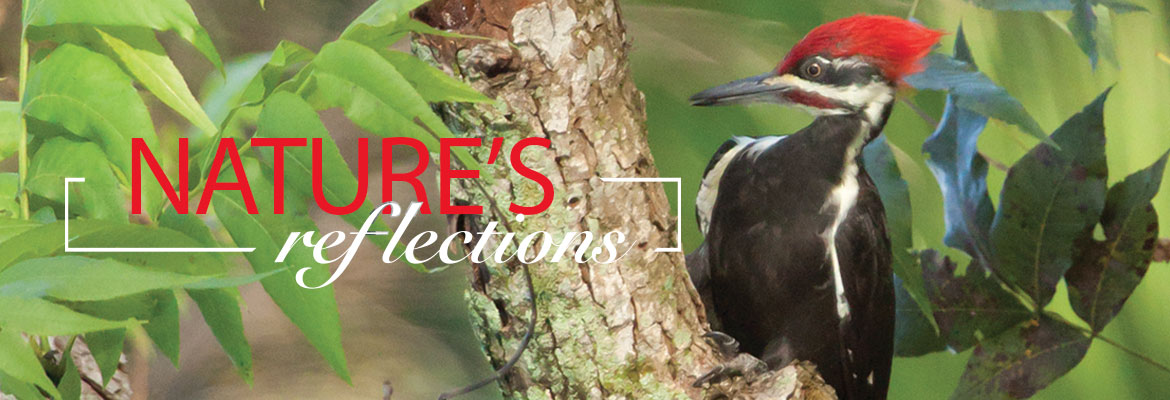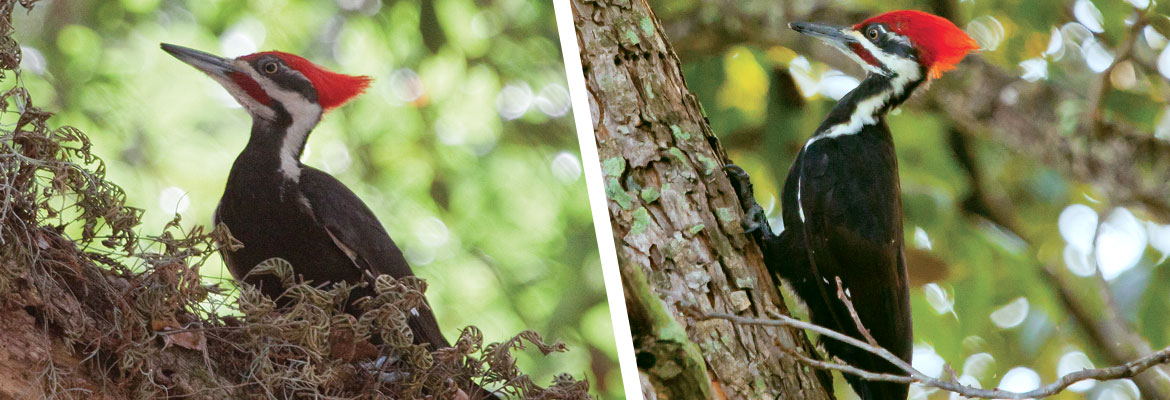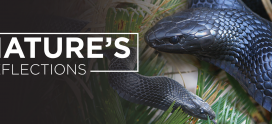
Nature’s Reflections-Pileated Woodpecker
The Pileated Woodpecker, (Melanerpes carolinus) is the largest and most famous of Florida’s seven woodpeckers. It was the inspiration for the cartoon character Woody Woodpecker. A mature bird is fifteen to nineteen inches tall and weighs about twelve ounces.
This woodpecker is easily identified by its bold black and white striped head and neck, long bill, white wing linings and the distinctive flame-red crest found on both male and female. Only the male has a red mustache stripe on the side of his face. The juvenile is similar, with a shorter crest.
Its long, straight, pointy beak is just right for making unique rectangular holes and its long, sticky tongue is equipped with a sharp end for spiking ants, larvae and a variety of other bugs lodged in tree bark. Carpenter ants are its primary food. It also eats nuts, berries and wild fruits and has been known to visit bird feeders.
It has an extra-thick skull. Its pecking or drumming (14 to 17 beats per second) is a distinctive loud hammering sound. Pairs establish territories which can cover as much as 4,000 acres. Although the Pileated mates for life, each bird normally sleeps alone. Roost cavities provide protection from weather and have multiple entrance and exit holes for alternate escape routes from predators.

All woodpeckers have feet especially adapted for hanging onto trees. Two toes go forward and two go backward, like having an extra thumb. That, along with very sharp claws, helps the woodpecker keep its grip. Stiff tail feathers give added support.
Each spring, a pair works together to excavate a new nest cavity in a dead tree where two to four eggs are laid. Both parents incubate the eggs during the day, but the male takes the night shift. The eggs hatch after two weeks and the young fledge in about a month. The young depend on their parents for several months while learning to feed themselves, and then gradually wander away to find a mate the following spring. The new pair establishes their own territory, and mate for life, but may take a new mate if one dies.
Florida woodpeckers don’t migrate but live here year round. The oldest known lived twelve years.




